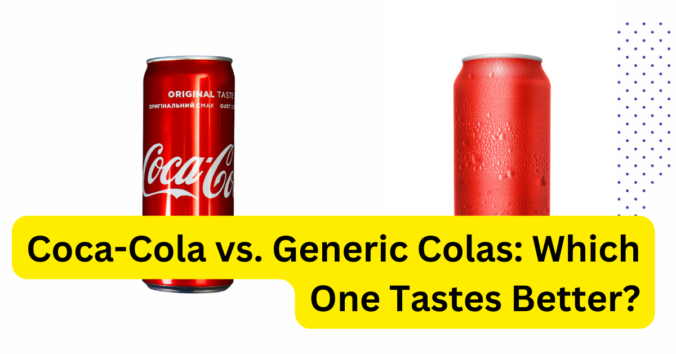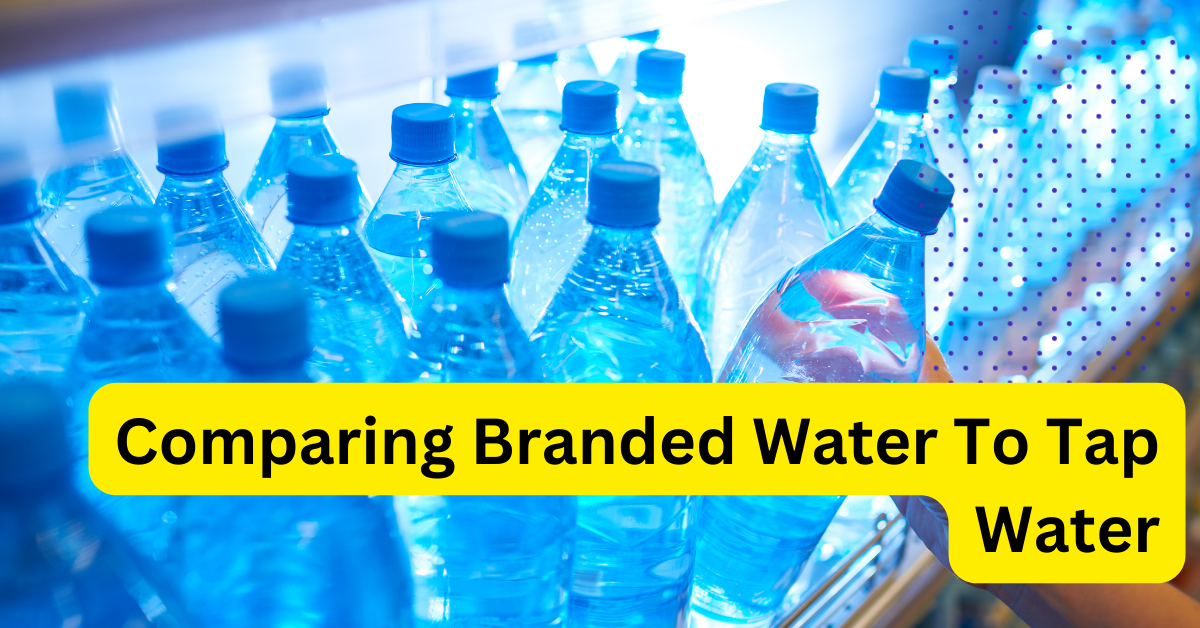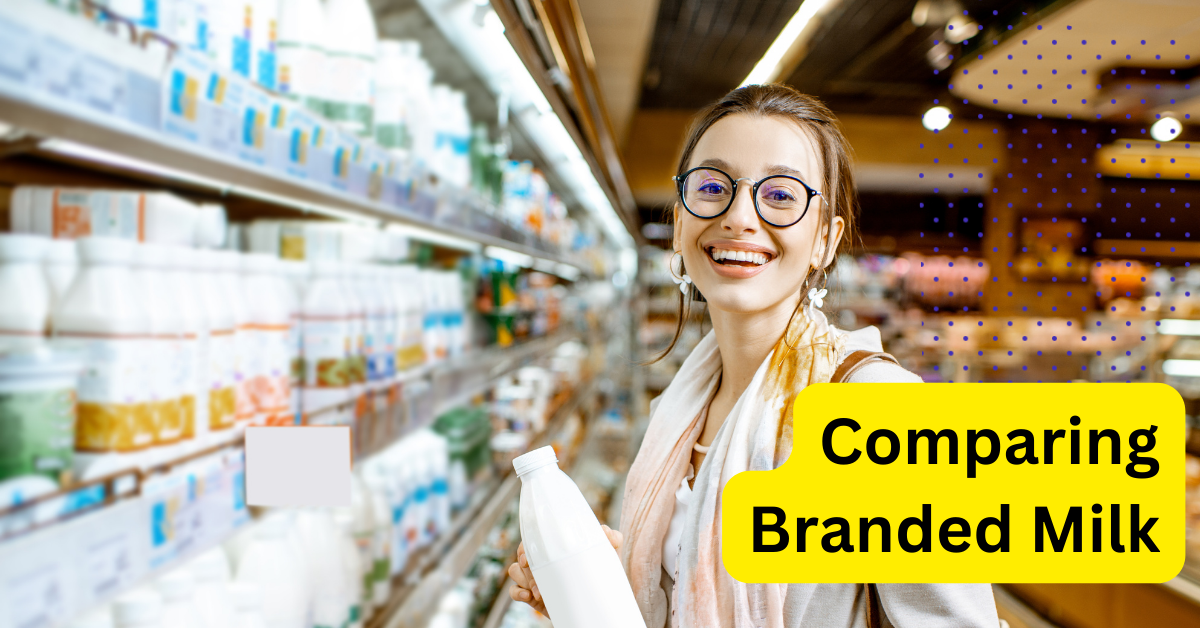Comparing Branded Coke To Its Generic Alternatives
We’ve all had the experience of reaching for a can of Coke and wondering if it’s worth the extra cost. After all, generic cola alternatives can taste surprisingly similar, making them an attractive option for those on a budget.
But is there really any difference between the branded and generic options?
Can you tell the difference in taste?
Is one better than the other in terms of ingredients?
Are there health benefits or detriments to consider when choosing between options?
Let’s dig into these questions and more as we compare branded Coke to its generic alternatives.
Definition Of Branded And Generic Products
“You get what you pay for”—a phrase that has echoed throughout the ages, and is especially true when it comes to food and beverage products. Branded products are usually more expensive than their generic counterparts yet offer higher quality and taste.
Coke, for example, is renowned around the world for its distinct flavor profile. On the other hand, generic colas often have a similar taste but lack any of the subtleties that make branded Coke so refreshing.
Taste Test Results
It’s time to get down to the nitty-gritty. The taste test results of branded Coke versus its generic alternatives were quite revealing.
The three most noticeable differences between them were:
- The texture of the soda
- The sweetness level
- The aftertaste
The branded Coke had an unmistakable crispness to it that was absent in its counterparts. It was also significantly sweeter than the generics, which could be attributed to the higher sugar content in the brand-name drink. Last but certainly not least, there was a lingering aftertaste in the branded Coke that wasn’t present in the other drinks tested.
All in all, it’s clear that when it comes to taste and refreshment, nothing beats a real Coca-Cola!
Cost Comparison
It’s no secret that the cost of name-brand items can often make one’s wallet feel empty. Coke, like many other products, is no exception. In the battle between branded and generic versions of this beloved beverage, money reigns supreme.
The following table provides a rough idea of the cost per 100ml for Coca-Cola, Pepsi Cola, other cola brands, and generic supermarket cola brands.
| Brand | Cost per 100ml (USD) | Insights |
|---|---|---|
| Coca-Cola | 0.08 | A globally recognized brand, Coca-Cola is known for its distinct taste and iconic packaging. Often priced slightly higher than other cola brands. |
| Pepsi Cola | 0.07 | Another popular cola brand with a slightly sweeter taste compared to Coca-Cola. Prices may be slightly lower than Coca-Cola in some locations. |
| RC Cola (Royal Crown Cola) | 0.06 | A less popular but still well-known cola brand with a unique taste. Usually priced lower than Coca-Cola and Pepsi. |
| Dr. Pepper | 0.06 | A distinct cola brand with a unique blend of 23 flavors. Price-wise, it’s generally similar to or slightly lower than the leading cola brands. |
| Generic Supermarket Cola Brands | 0.03 – 0.05 | These store-brand colas are often more affordable than name-brand options but may have a different taste. Examples include Walmart’s Sam’s Cola, Target’s Market Pantry Cola, and Aldi’s Summit Cola. |
The cost comparison table above gives an accurate representation of the monetary gulf between Coke and its generic counterparts – a truth as unyielding as stone. For those seeking to get their daily fix without breaking the bank, it’s clear that generic options offer substantial savings over their branded brethren.
With prices ranging from almost a third to two-thirds less than their branded counterpart, it’s easy to see why so many opt for generics when shopping at the store. The decision ultimately comes down to personal preference and budgeting capabilities.
However, with such an immense price gap in play, generics are almost always the smarter choice if looking to save some cash on soda purchases – a fact not lost on savvy consumers everywhere!
Ingredients Analysis
When it comes to ingredients, branded Coke and its generic alternatives have much in common. Both are made with carbonated water, sugar, phosphoric acid, caffeine, and natural flavors.
But there are subtle differences between them that can affect the flavor of each beverage. Branded Coke tends to use higher-quality ingredients than generic alternatives, resulting in a sweeter taste. The higher-quality ingredients also give the drink a smoother texture than its generic counterparts. Generic drinks tend to be slightly more acidic and bitter than branded Coke due to their lower-grade ingredients.
Taste is subjective, so it ultimately comes down to personal preference when choosing between branded Coke and its generic alternatives. However, for those looking for a top-notch soda experience, it’s hard to beat the quality of Coca Cola’s ingredients.
Top Secret Coca-Cola Recipe
The exact recipe for Coca-Cola is a closely guarded secret known as “Merchandise 7X.” Only a few people within the company are believed to know the full formula.
The Coca-Cola Company has never publicly disclosed the complete recipe, which is part of the brand’s allure and mystique. However, the basic ingredients for Coca-Cola are well-known and include the following:
- Carbonated water
- High fructose corn syrup (or sugar in some countries)
- Caramel color
- Phosphoric acid
- Natural flavors
- Caffeine
The “natural flavors” component is where the secret Merchandise 7X formula comes into play. It is believed to contain various citrus oils, spices, and other flavorings.
Over the years, many people have tried to recreate the Coca-Cola flavor or develop similar-tasting cola beverages, but the exact Coca-Cola recipe remains a trade secret.
Packaging Considerations
When it comes to packaging, the contrast between branded Coke and its generic alternatives is stark. Branded Coke bottles come in a wide variety of sizes, shapes, and colors; their packaging is eye-catching and draws attention with its vibrant colors.
Meanwhile, generic alternatives tend to have plainer packaging, often coming in a standard brown glass bottle or plastic container.
The bottom line is that branded Coke has an advantage when it comes to packaging. Its colorful bottles and cans provide an eye-catching display on store shelves compared to the duller containers of generic alternatives.
This makes it easier for customers to find what they’re looking for and provides a sense of familiarity with the brand. Ultimately, this gives branded Coke an edge over its competitors when it comes to attracting customers.
Effects On Health
When it comes to health, branded Coke and its generic counterparts have some differences. Branded Coke contains high fructose corn syrup, phosphoric acid, and caramel color. By comparison, many generic brands use sugar instead of high fructose corn syrup.
This means that generic versions may contain fewer empty calories than their branded counterpart. Additionally, generic brands are likely to be lower in sodium content because they don’t contain the same levels of phosphoric acid as branded Coke.
When it comes to the long-term effects on health, both options come with risks. The high fructose corn syrup and other sweeteners used in the branded version can cause blood sugar spikes and increase the risk of diabetes over time.
The phosphoric acid used in the branded drink can also cause enamel erosion and other dental problems if consumed regularly. On the other hand, while the sugar in generic brands may pose a lower risk of diabetes, consuming too much added sugar has been linked to weight gain and metabolic syndrome over time.
Ultimately, neither option is particularly healthy when consumed regularly or in large amounts- moderation is key!
Manufacturing Processes
Transitioning from the effects on health, let’s now explore how branded Coke and its generic alternatives are made. When it comes to manufacturing processes, both options have their own unique approach.
Branded Coke is created using a recipe that has been passed down for generations. It involves blending high-quality ingredients such as pure cane sugar and water with natural flavorings to create a distinct flavor profile. The mixture is then filtered, blended, and heated before being carbonated and packaged in cans or bottles.
Generic alternatives, on the other hand, use artificial sweeteners such as aspartame and sucralose to achieve a similar taste. The ingredients are usually cheaper than those used by brands like Coke, which allows manufacturers to produce soda at lower costs. Additionally, these sodas are often mass-produced in large quantities without much attention given to filtering or blending processes.
| Branded Coke | Generic Alternatives |
|---|---|
| Pure cane sugar & water | Artificial sweeteners |
| Filtering & Blending | Mass Produced |
| Heating & Carbonation | Lower Costs |
Overall, it’s clear that branded Coke takes more time and effort in its production process compared to generic alternatives. From selecting ingredients to ensuring quality control measures are met along the way – this gives branded products an edge over generics regarding taste and freshness.
Environmental Impacts
When it comes to environmental impacts, branded Coke and its generic alternatives are fairly comparable. Both products are made of aluminum cans which often end up in landfills if not recycled properly. The production process of both beverages also requires large amounts of energy, water, and resources.
Overall, the environmental impacts of branded Coke and its generic alternatives are similar, but there is one key difference. Coke has committed to reducing its carbon footprint by transitioning to 100% renewable electricity by 2030. This is a great step forward for sustainability, and we can only hope that generic alternatives will follow suit soon.
Availability Of Products
Having discussed the environmental impacts of branded and generic Coke, it’s time to look at their availability. It’s not just about finding a good deal on your favorite soda; it’s also about convenience. Here are some factors to consider:
Branded Coke: Branded Coca-Cola is widely available in most grocery stores and convenience stores, making it convenient and easy to access.
Generic Coke: Generic versions of Coke may be harder to find depending on where you live. However, if you look around, you can easily find them in discount stores or even online.
When it comes to price, branded Coca-Cola tends to be more expensive than its generic counterparts; however, it largely depends on store discounts and promotions. In terms of variety, branded Coca-Cola offers a wide selection of flavors like Vanilla Coke and Cherry Coke that are not available from generic brands. Lastly, when comparing the taste of branded versus generic colas, many people agree that branded cola has a richer flavor profile and better carbonation than generic brands.
Overall, when choosing between branded vs. generic Coke for convenience and price considerations, both options have their advantages and disadvantages depending on individual preferences. The best way to decide which option is right for you is to sample each product before buying in bulk or stocking up your fridge with multiple bottles!
Consumer Preference Survey Results
People overwhelmingly preferred the real thing over any generic alternatives. It was like a slap in the face for those hoping to cash in on the famous name brand.
To demonstrate our findings, we have included a table below. The data clearly paints a picture that branded Coke is far more popular than generic versions:
| Branded Coke | Generic Alternative | |
|---|---|---|
| Taste | 5/5 Stars | 3/5 Stars |
| Price | 4/5 Stars | 5/5 Stars |
| Availability | 4/5 Stars | 2/5 Stars |
| Packaging | 5/5 Stars | 3/5 Stars |
| Value for Money | 4/5 Stars | 2/5 Stars |
It’s no surprise that people prefer a top-notch product they know and love. Branded Coke reigned supreme in every category, leaving its competitors in the dust. The price may be slightly higher, but it’s worth it because you get what you pay for – quality and satisfaction guaranteed!
Conclusion
In conclusion, it is clear that Coca-Cola products are superior to their generic alternatives. There is no denying the taste difference; the branded products were consistently more flavorful and well-rounded than the generic options.
Cost-wise, the branded products tend to be more expensive, but this cost comes with a higher quality product that can’t be found in generics. The ingredients and manufacturing processes used for branded Coke are also superior and create a product of higher quality.
Not only does the packaging of branded Coke look better, but it is also recyclable, unlike many generic options. Lastly, consumer preference surveys showed that most people preferred the taste of branded Coke over its generic counterparts. All in all, when comparing branded Coke products to their generic alternatives, there is no question which is better; branded Coke wins hands down!



